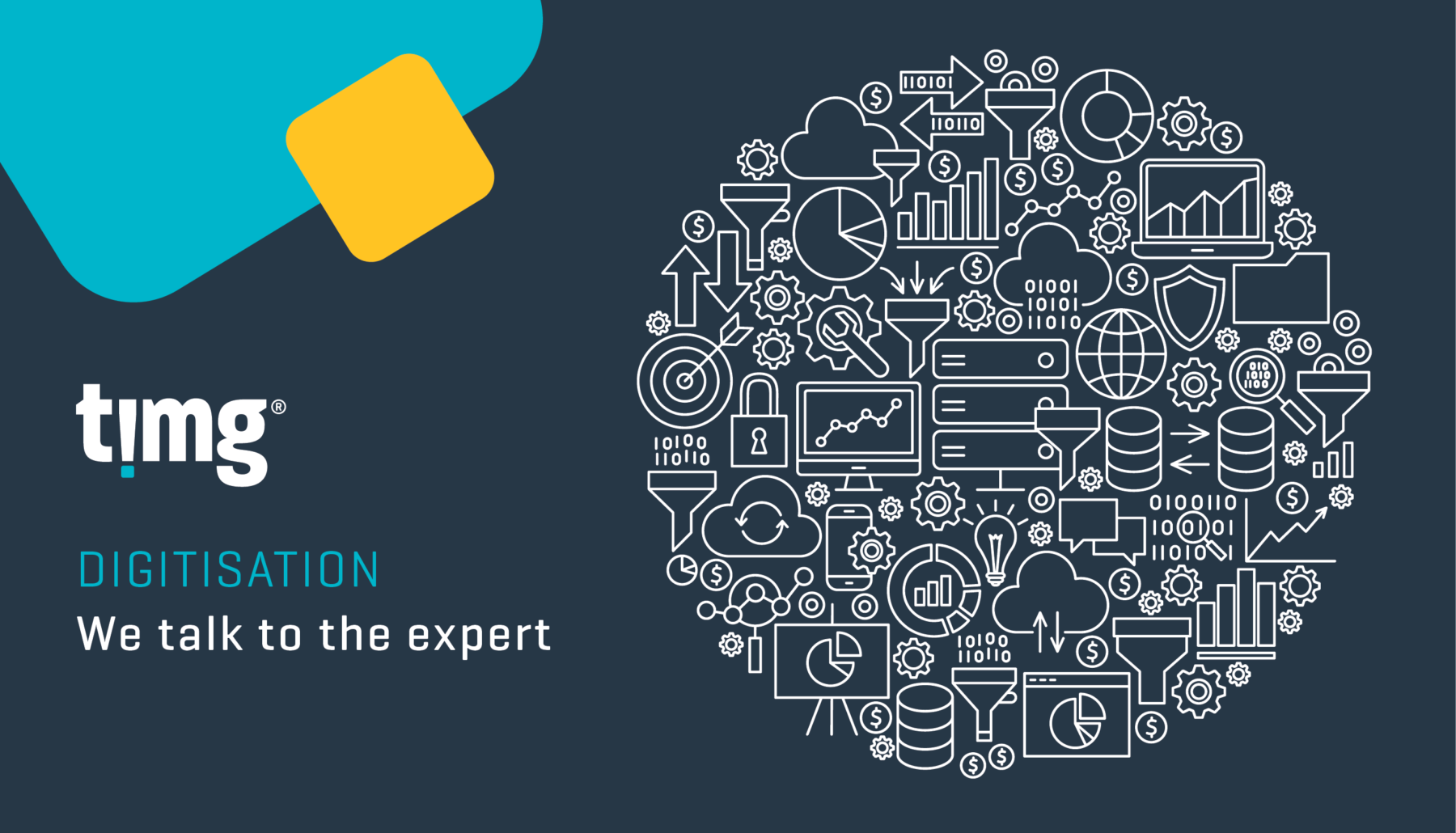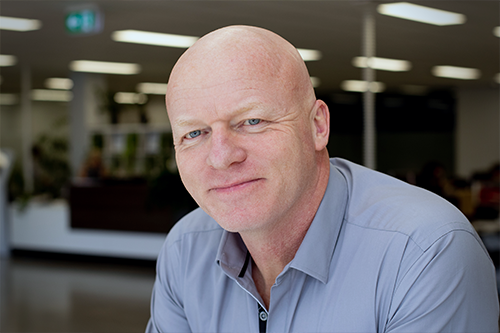Digitisation: We talk to the expert
At TIMG, we believe that we have the people and products to solve today’s business problems . . .

At TIMG, we believe that we have the people and products to solve today’s business problems from a managed solution perspective. We caught up with Justin Holt, our National Digitisation Specialist for a quick chat to find out more about this.
“Simply put, digitalisation is the way of the future and digitisation is the way to do it.”
Justin Holt,
TIMG National Digitisation Specialist

Q – Justin, thanks for taking the time to chat with us. Can we start with a simple one? What part does digitisation play in today’s business solutions?
JH – You’re welcome. I think in order to understand the role that digitisation plays, it’s probably best to start by differentiating between digitisation and digitalisation. You may have heard both terms before but essentially, digitisation is the process of transforming physical media to an electronic format whereas, digitalisation, is the transformation of organisational processes utilising solutions like digitisation. A modernisation if you like, of legacy practice and process.
Q – So, what’s the lightbulb moment that sees an oganisation decide to consult a service provider like TIMG for a digitisation project?
JH – Our clients come to us because we have an exceptional reputation as a solutions provider. With over 20 years’ experience in the Information Management industry, we bring to the table our vast experience, knowledge, and substantial resources every time a client engages us. We offer a fully certified and auditable managed service where we look after every operational element for the duration of a project.
Q – If anything, 2020 to date, has shown us that our world is fragile, unpredictable and ever-changing. What’s your take on the role that digitisation plays in the broader scheme of things right now?
JH – Wow, that’s a big question and a good one. To survive, organisations will need to embrace innovation and adopt change in a hurry. Because innovation is rarely the invention of something completely new, but, more the rearrangement of existing tools and services to replace non practical situations, solutions that deliver increased efficiency and agility will always be sought after options.
Also, as technology drives the evolution of applications and solutions, organisations that are forward thinking, are looking for more tailored delivery mechanisms to enable value outcomes as they navigate the unpredictability of the ever-changing business world.
Q – We’ve heard of the concept of “data mining” – this has something to do with the digitisation process doesn’t it?
JH – (Justin laughs . . .) Kind of – yes. Data mining is broadly associated with the extraction and analysis of data from a larger set of pre-existing raw data. Digitisation is relevant to this when volumes of hard copy paper need to be scanned, indexed, and uploaded to the relevant platform for review and analysis. That said, there has never been a better opportunity for the commercial world to explore digital transformation services to ease the operational requirements of today’s business environment.
Outsourcing non-essential operations, will increasingly become part of the “New Normal” particularly with WFH as the new outsourced office. Accessibility to a company’s data being leveraged across global IT infrastructure is now a requirement not an option, and digitisation will play a big part in assisting companies to achieve their new operational goals. For the record, we’ve effectively become business partners to some of the largest companies in Australia, enabling them to focus on their core business while we provide the essential digitalisation of their daily working environments.
Q – At the risk sounding too self-promotional, do you have practical example of an actual digitisation job where you oversaw a transformational change for a business?
JH – Yes, I do. This was a very satisfying job where we had a client in the public sector who had several reasons for wanting to convert their paper files to an electronic format. They were wanting to reduce their physical office floor space, maintain easy access to data and streamline their legacy document archiving process. Documents within the organisation were only available as folders stored in a physical location. This made it difficult for stakeholders to capitalise on the excessive physical storage space. TIMG was asked to provide a digitisation solution to improve accessibility and ease navigation of these documents, while still retaining the original filing structure.
In consultation with the client, we drew up a workable timetable and set about replicating the exact structure of the client’s filing system into digital form, by using innovative folder structures and bookmarking. Optical Character Recognition (OCR) was also applied to the documents to enable data mining capabilities. This process created an easy way to search for documents without manually going through each page. The documents were stored in PDF/A format for a longer life cycle, availability, compatibility, and compliance. This enabled the clients to not have to learn a new filing system, saving them time and money in the adaptational change to their new solution.
Q – Thank you for your time Justin. You’re clearly very passionate about the transformational power of digitisation. We look forward to hearing more about the work you and your team are doing.
JH – It’s been my pleasure. Watch this space – we’re on one hell of a ride!
 Your browser is very old. It's so old that this site will not
work properly as it should.
Your browser is very old. It's so old that this site will not
work properly as it should.